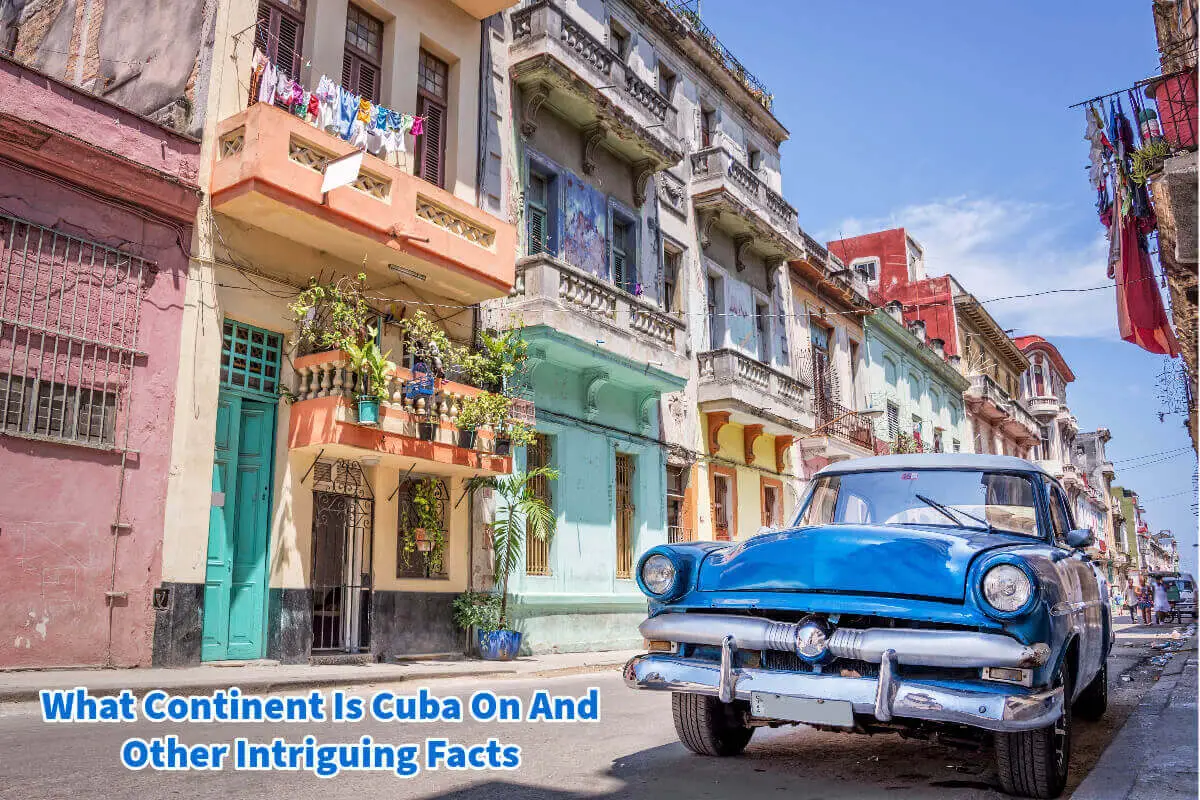When you think of Cuba, what comes to mind? Perhaps you envision the iconic vintage cars that roam the streets of Havana or the music that seems to be the nation’s heartbeat. But have you ever paused to consider what continent Cuba is on? It’s not uncommon to wonder if Cuba belongs to South America or North America, and you may be surprised to learn the answer.
Cuba is part of the North American Continent, which includes Canada, Mexico, the United States, and other parts of the world. While Cuba is synonymous with the Caribbean in many people’s minds, geographically speaking, it’s a part of the North American continent. Read on as we explore more about Cuba.
Table of Contents
- What Continent Is Cuba On? And Other Intriguing Facts: Is Cuba In South Or North America?
- Government & Economy: The Socialist State
- Related Questions
What Continent Is Cuba On? And Other Intriguing Facts: Is Cuba In South Or North America?
When considering the “continent of Cuba,” it’s important to clarify that Cuba is not a continent but rather an island nation. For many, Cuba immediately evokes images of the Caribbean, with its crystal-clear waters and vibrant culture.
However, the question of which continent it belongs to can be a curiosity. Despite its Caribbean identity, Cuba is geographically situated in North America, sharing the continent with countries like Canada, Mexico, and the United States.
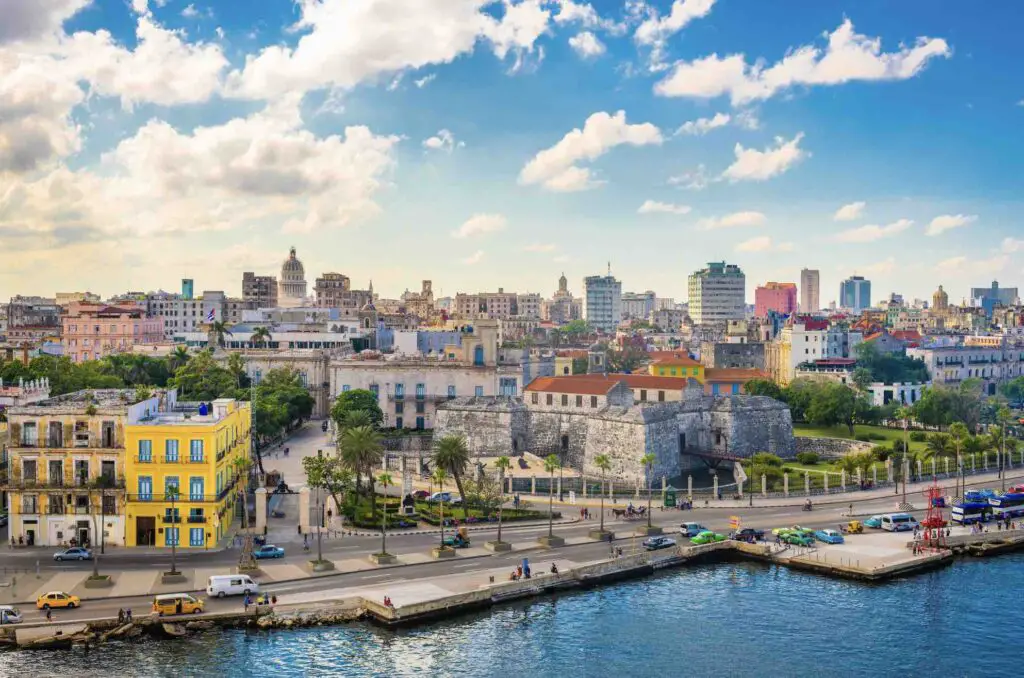
Yet, the North American continent is not just limited to these more commonly recognized nations. It also includes other subregions like Central America and the Caribbean islands. Within the Caribbean, Cuba holds the distinction of being the most significant island.
Along with its neighboring islands, it forms a part of the Greater Antilles, a chain that came into existence millions of years ago due to the collision of two tectonic plates on Earth.
Geographical Placement: Is Cuba In South Or North America?
Cuba is technically a part of the continent of North America. Though it might not be the first place to spring to mind when you think of North American nations, Cuba holds its unique position within the geographical framework of the continent.
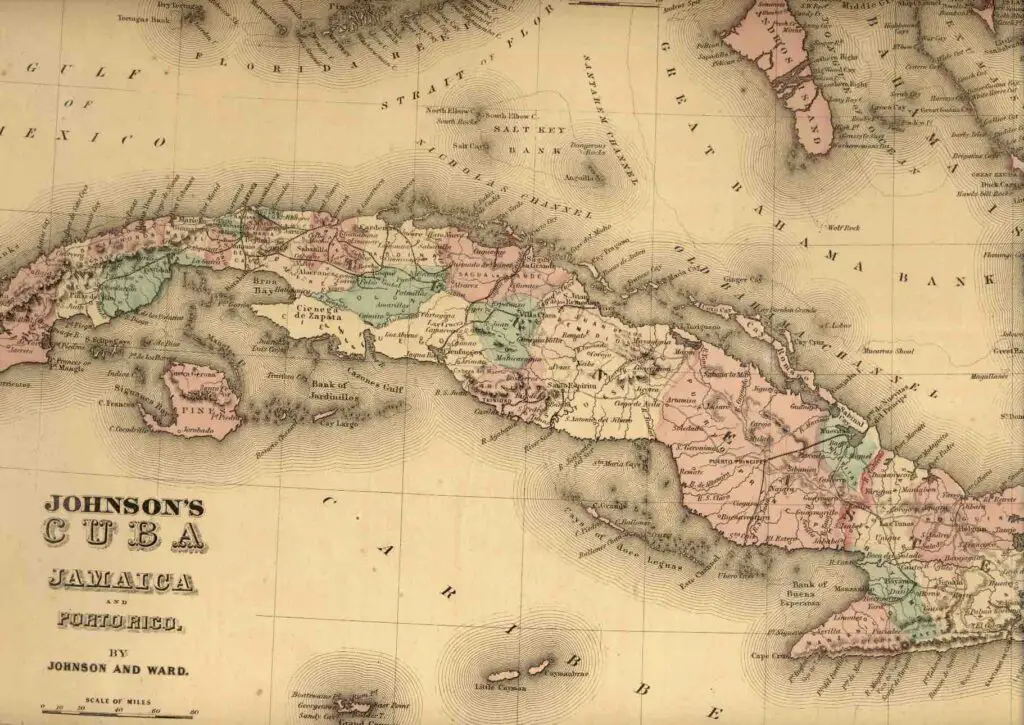
Geographically speaking, North America consists of three major countries—Canada, the United States, and Mexico—as well as Central America and the Caribbean islands. Cuba is the largest island in the Caribbean Sea and, along with its neighbors, forms part of the Greater Antilles.
Formed millions of years ago due to tectonic plate collision, Cuba has a fascinating geography. It is a long, narrow island stretching 750 miles (1,200 kilometers) from east to west. Interestingly, its width varies but remains, for the most part, at a mere 60 miles (100 kilometers).
Topography Of Cuba
Cuba’s topography is a study in contrasts. High mountains and undulating hills comprise approximately one-third of the island, while the remaining two-thirds consist of lowland plains predominantly used for farming. Its geological history has shaped this diverse landscape, contributing to Cuba’s rich biodiversity.
People & Culture Of Cuba: A Melting Pot Of Influences
The Cuban culture is a harmonious blend of native, African, and European influences, making it one of the most colorful and vibrant cultures globally.
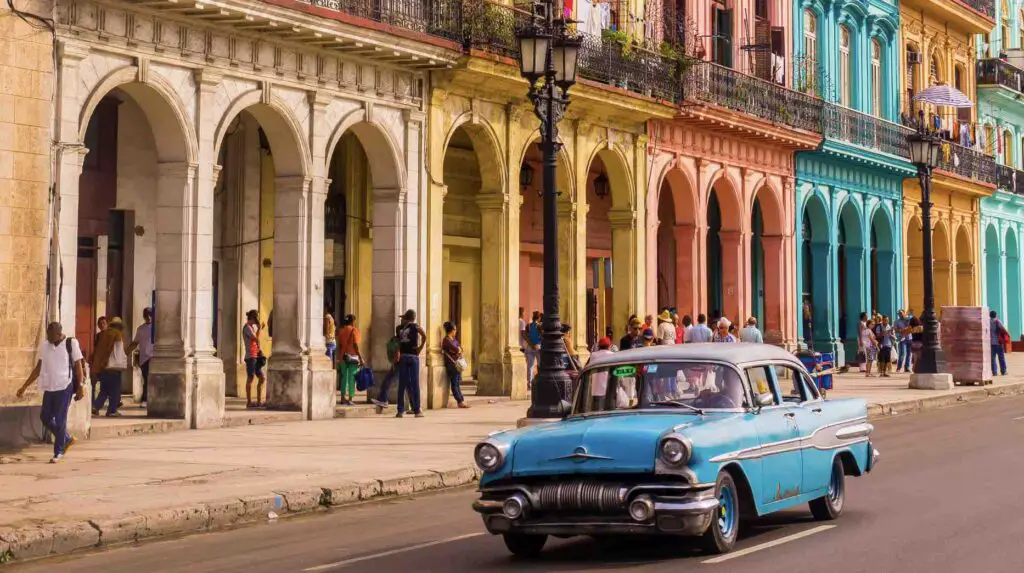
The island’s political landscape, significantly shaped by the introduction of communism in 1959, has had positive and negative implications for its people.
Music And Arts Of Cuba
Music is a vital aspect of Cuban culture. You’d be hard-pressed to stroll through Havana without encountering bands passionately playing ‘son,’ a form of music that marries lively rhythms with classical guitar techniques. It’s this blend that has made Cuban music globally recognizable.
Sports Of Cuba
Contrary to most Latin American countries where soccer reigns supreme, baseball is the sport of choice in Cuba. Introduced in the 1860s by Americans, baseball has grown into a national obsession.
Cuba has produced some of the best international baseball stars and boasts one of the most skilled national teams in the world.
Nature In Cuba: A Rich Ecosystem
Cuba’s varied landscapes are home to unique flora and fauna. Cuba has everything from mountain forests to lowland jungles and even small deserts. The island hosts the world’s smallest bird, the bee hummingbird, which reaches a maximum length of two inches. Equally fascinating is the world’s smallest frog, found exclusively in Cuba.
Government & Economy: The Socialist State
Cuba is a socialist state governed by the Cuban Communist Party. While the citizens have the right to vote, the Communist Party remains the only legal political entity. Fidel Castro, a name synonymous with Cuba, held various powerful positions until his retirement in 2008 due to ill health.
U.S.-Cuba Relations
The diplomatic relationship between Cuba and the United States has ups and downs. After a long period of hostility following the communist takeover in 1959, a significant thaw came in 2015 with the reopening of embassies in both countries, representing a historic move towards normalization.
History Of Cuba: From Indigenous Peoples To Independence
The Ciboney and Guanahatabey peoples initially inhabited Cuba. Around a thousand years ago, the Taino people from Venezuela displaced them. Spanish forces arrived in 1511, subduing the Taino and establishing Cuba as a Spanish territory.
Sadly, the native populations were decimated due to overwork and diseases introduced by the Europeans.
Subsequently, enslaved Africans were brought in large numbers, primarily for sugarcane farming. It wasn’t until the end of the Spanish-American War in 1898, aided by American forces, that Cuba won its independence.
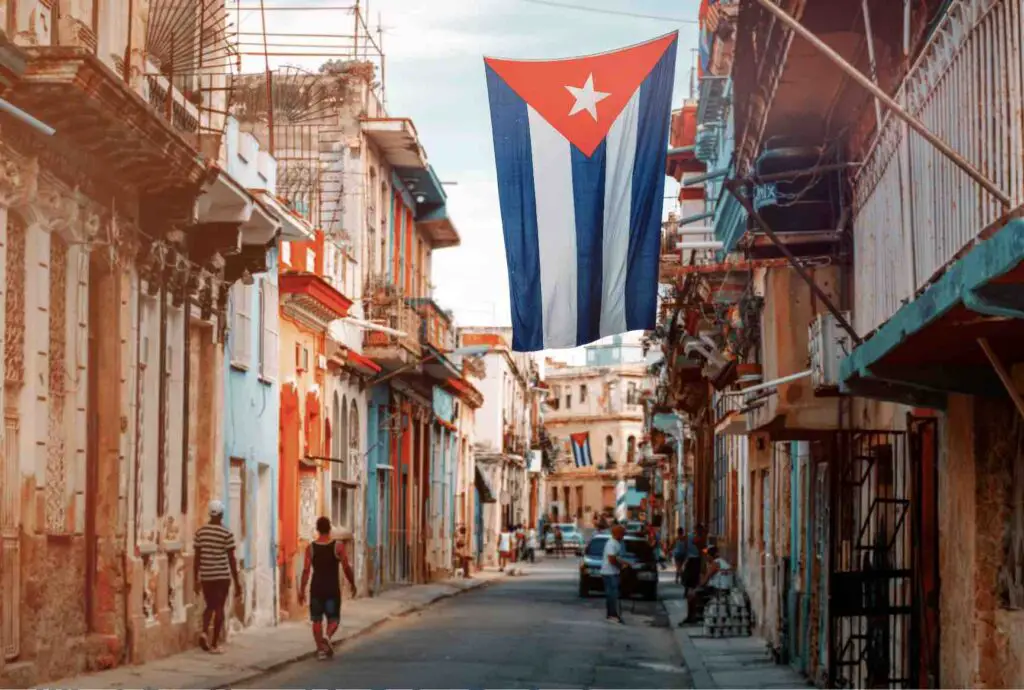
However, U.S. influence remained strong, contributing to the communist revolution led by Fidel Castro in 1959.
Cuba has contrasts, vibrant culture, rich history, and fascinating geography. Although culturally and historically, it’s an integral part of North America, it shares bonds with South America and other Caribbean nations.
Regardless of its geographical designation, one thing is sure: Cuba’s unique attributes make it a compelling country that continues to captivate the imagination of people worldwide.
At A Bus On A Dusty Road, we talk about travel, life, and ex-pat living. We are all about “Living Life As A Global Citizen.” We explore social, cultural, and economic issues and travel.
We would love to have you be part of our community. Sign up for our newsletter to keep up-to-date by clicking here. If you have any questions, you can contact me, Anita, by clicking here.
Listen to our Podcast called Dusty Roads. You can find it on all major podcast platforms. Try out listening to one of our podcasts by clicking here.
Subscribe to our A Bus On A Dusty Road YouTube Channel with great videos and information by clicking here.
Related Questions
4 Tips To Preparing Your Own Family History Trip and Travel
Before you decide to travel to your Ancestor’s hometown, there are some things you should do to make sure your family history tour is successful. First, you must research as much genealogy as possible before you travel. You should then do local research on the areas you are traveling to; map out what places you should visit. Also, take some time to study the maps of where you are traveling.
To learn more, you can read our blog on 4 Tips To Preparing Your Own Family History Trip and Travel by clicking here.
What Are Some Lessons We Can Learn From Mongolian Nomadic Herders?
The Mongolian nomadic herders in the Gobi Desert taught me six important lessons about our community support importance. I learned some important lessons about working together as a group and supporting our neighbors while also building a support team that will always be there for us – especially in our time of need. For this to happen, we must each be willing to serve our communities and work together.
You can discover more by reading our blog, 6 Lessons On Community Support from The Mongolian Nomadic Herders, by clicking here.
3 Easy Steps to Handle Stress And Pressure In Life
Alia and Thomas Crum wrote a fascinating article in the Harvard Business Review that stated that stress in our lives could prove good. Especially if we learn to see the stress, then own up to the stress, and finally use the stress to our advantage.
By clicking here, you can discover more by reading our blog, 3 Easy Steps to Handle Stress And Pressure In Life.

